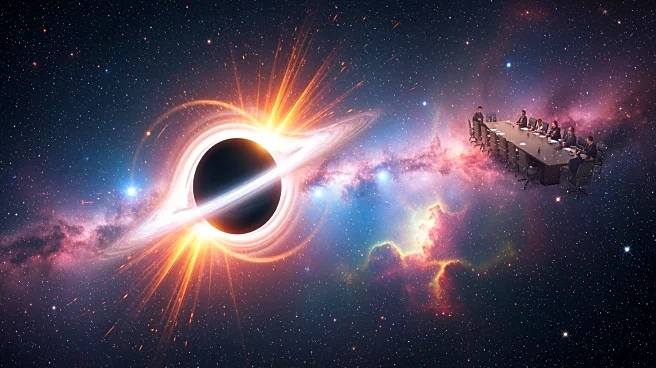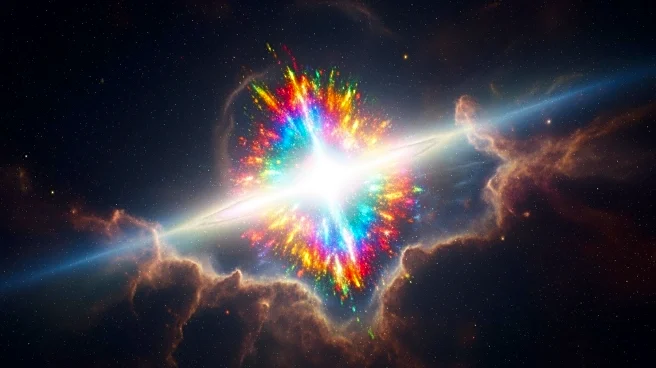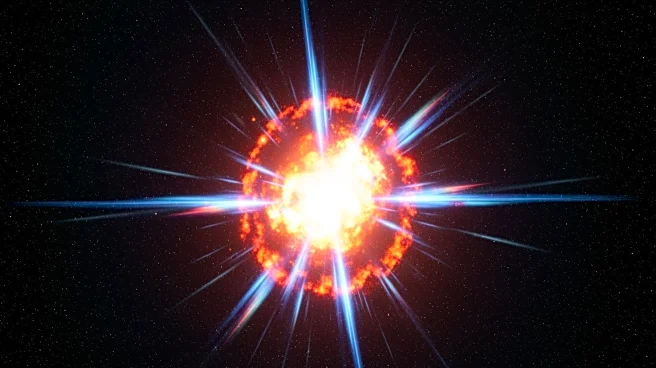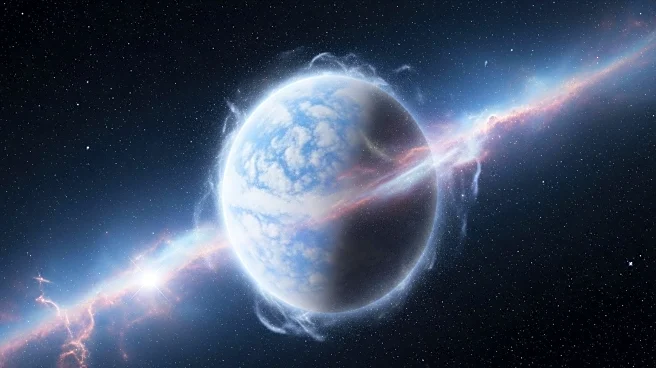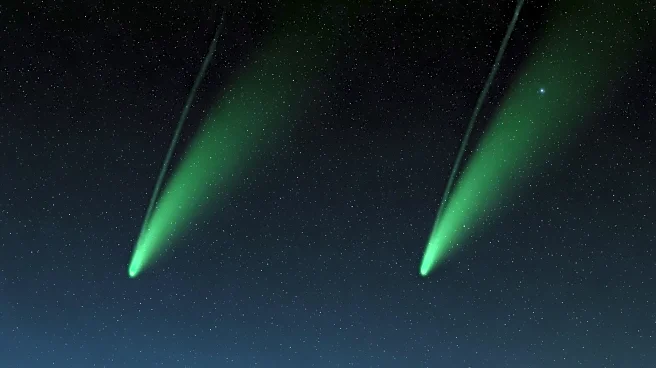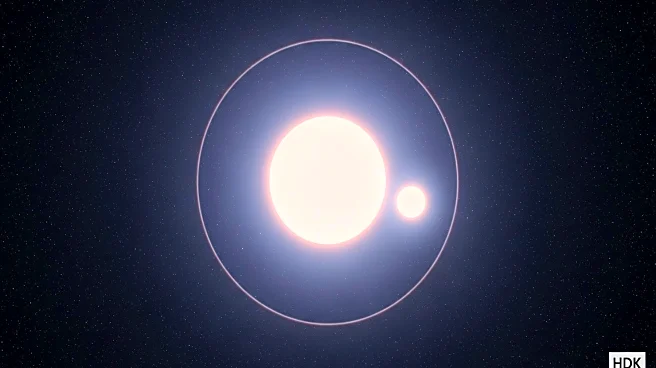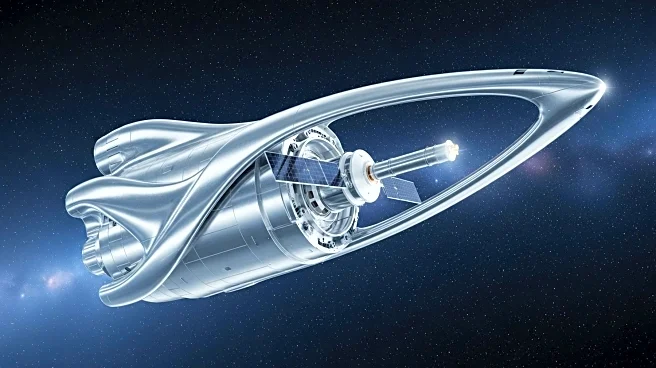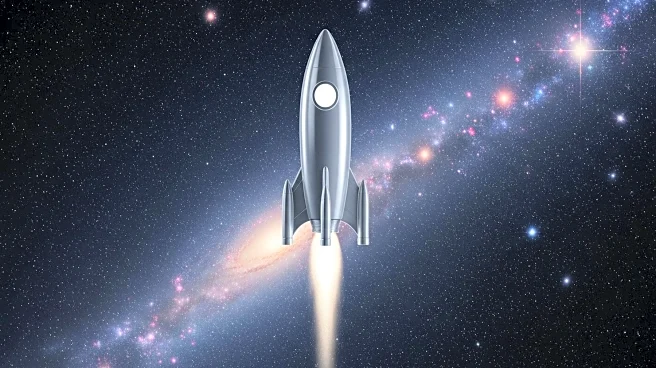What's Happening?
Astronomers have observed a unique cosmic event where a black hole consumed a star, leading to an extraordinary gamma-ray burst. This event, known as GRB 250702B, lasted for an unprecedented seven hours,
marking the longest-duration gamma-ray burst recorded. The burst was first detected on July 2, 2025, by NASA's Fermi space telescope after traveling across the universe for approximately 8 billion years. The gamma-ray burst was accompanied by soft X-rays detected a day earlier by the Chinese-European Einstein Probe, a phenomenon never seen before. Researchers suggest that the burst resulted from a merger between a helium star and a smaller stellar-mass black hole. As the star expanded, the black hole consumed more material, eventually reaching the star's core and causing jets to explode the star from within. This hypothesis presents a new type of gamma-ray burst progenitor system, challenging existing models and understanding of such cosmic events.
Why It's Important?
The observation of GRB 250702B is significant as it introduces a potentially new category of gamma-ray burst progenitor systems. This discovery could reshape the understanding of black hole and star interactions, providing insights into the dynamics of cosmic mergers. The event's unprecedented duration and unique characteristics challenge existing theories, prompting astronomers to reconsider the mechanisms behind gamma-ray bursts. The findings could have implications for astrophysics, particularly in understanding the lifecycle of stars and the role of black holes in stellar evolution. Additionally, the event highlights the capabilities of modern telescopes and space observatories in detecting and analyzing distant cosmic phenomena, advancing the field of high-energy astrophysics.
What's Next?
Further analysis and data collection are expected as astronomers continue to study GRB 250702B. Observatories worldwide are likely to contribute additional observations, which may help refine the understanding of this unique event. The publication of a NASA press release, accompanied by animations, is anticipated, although it may be delayed due to a government shutdown. This release could provide more detailed insights and visualizations of the event. Researchers will likely explore the implications of this discovery for existing models of gamma-ray bursts and consider the possibility of similar events occurring elsewhere in the universe. The findings may also inspire new theoretical models to explain the behavior of black holes and their interactions with stars.
Beyond the Headlines
The discovery of GRB 250702B raises questions about the rarity and potential frequency of such cosmic events. It challenges astronomers to consider the conditions under which a black hole can consume a star and produce such a prolonged gamma-ray burst. The event also underscores the importance of international collaboration in astronomy, as data from various observatories contributed to the understanding of this phenomenon. Ethically, the study of such distant events prompts reflection on humanity's place in the universe and the pursuit of knowledge beyond Earth. The findings may influence future research priorities in astrophysics, encouraging the exploration of other rare cosmic occurrences.
